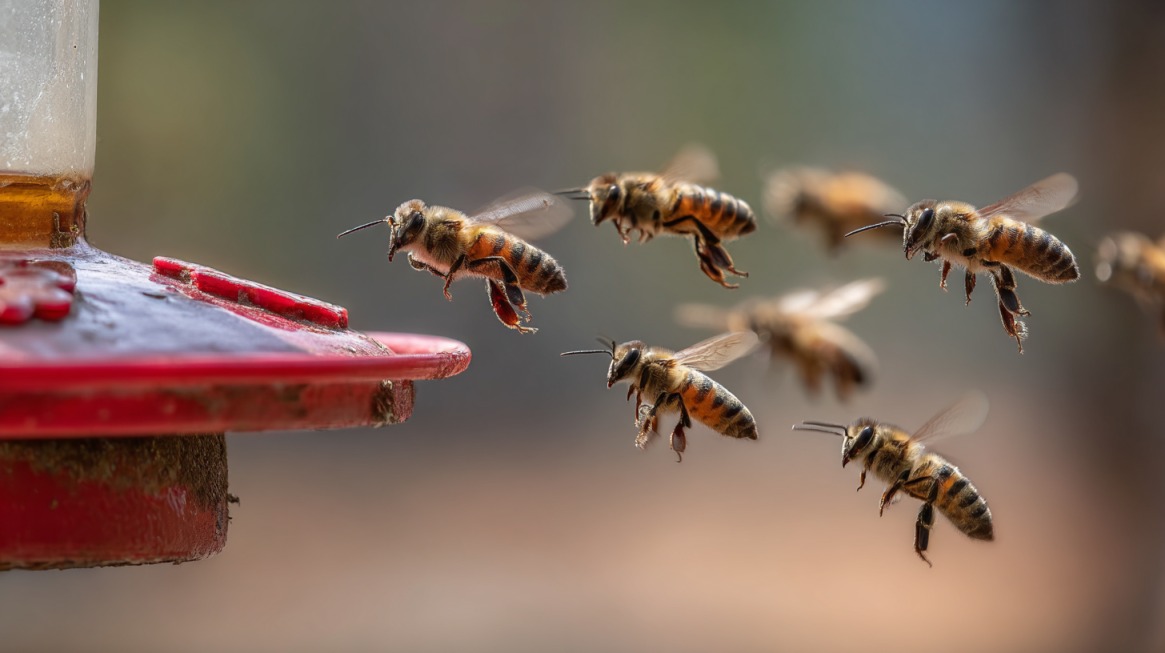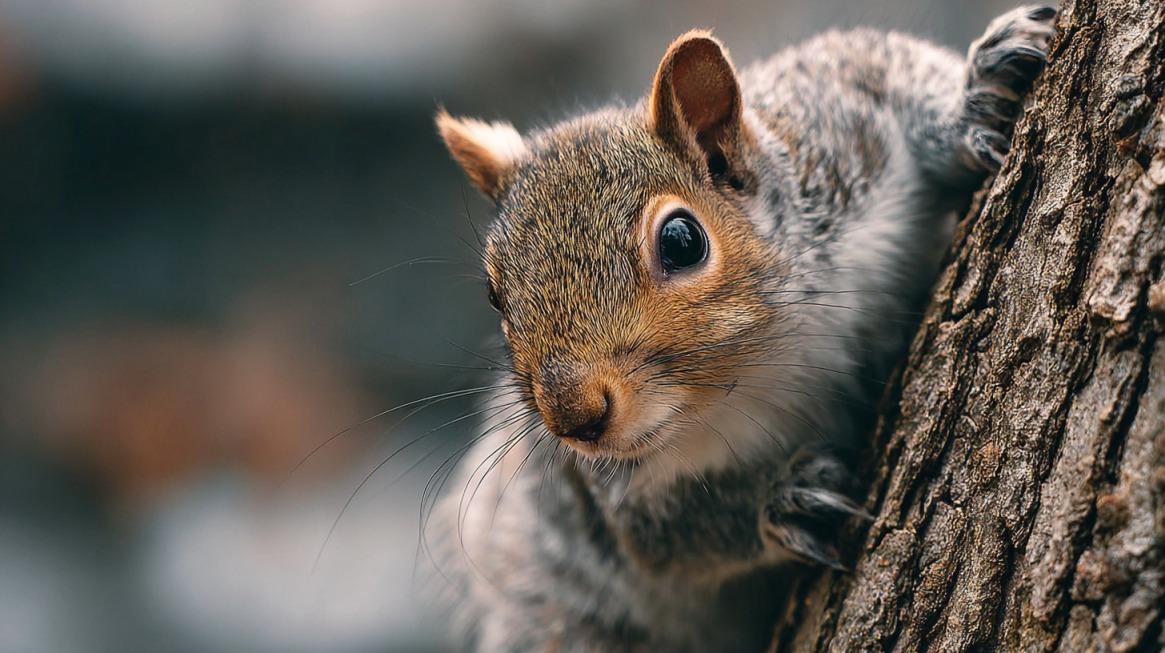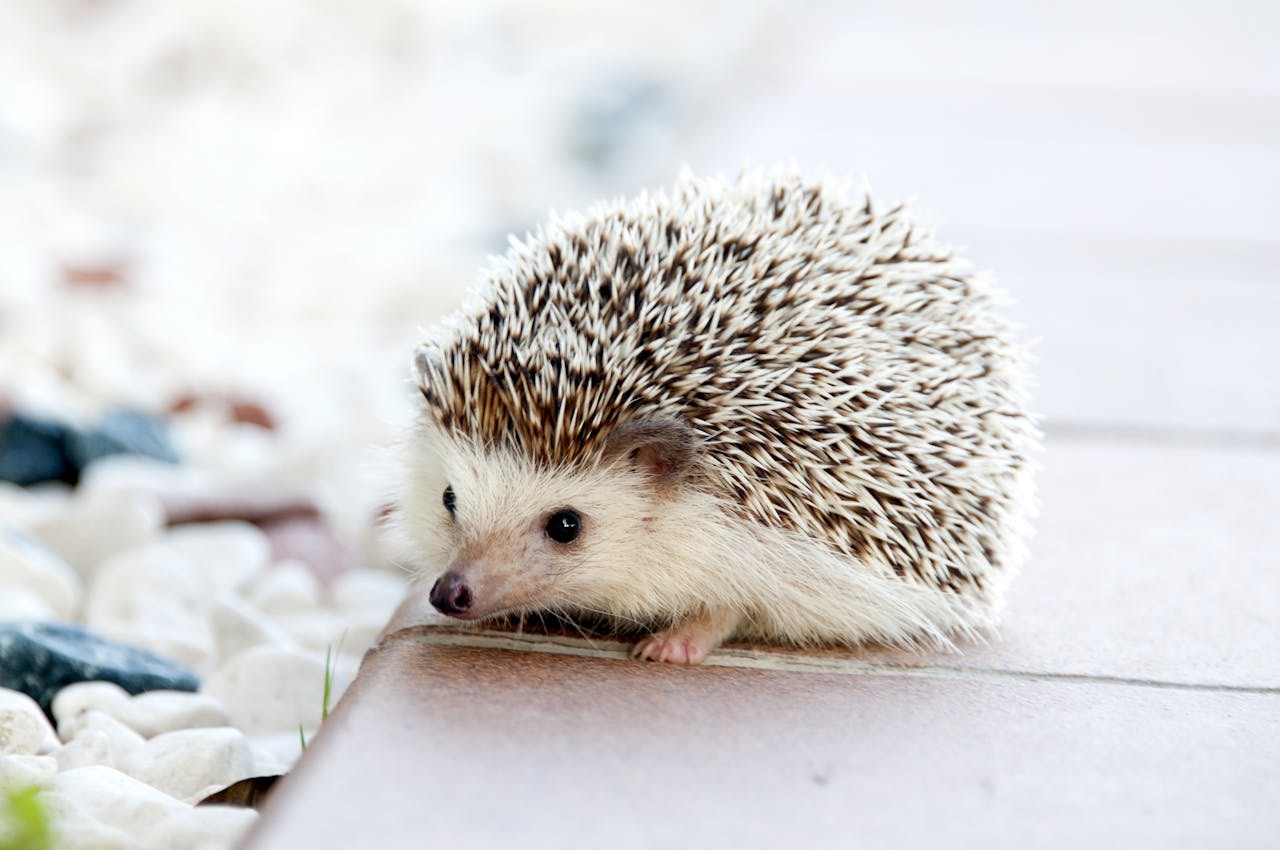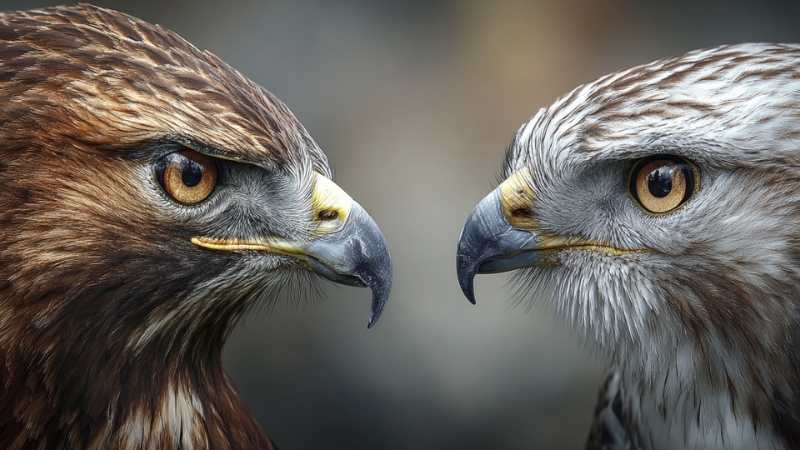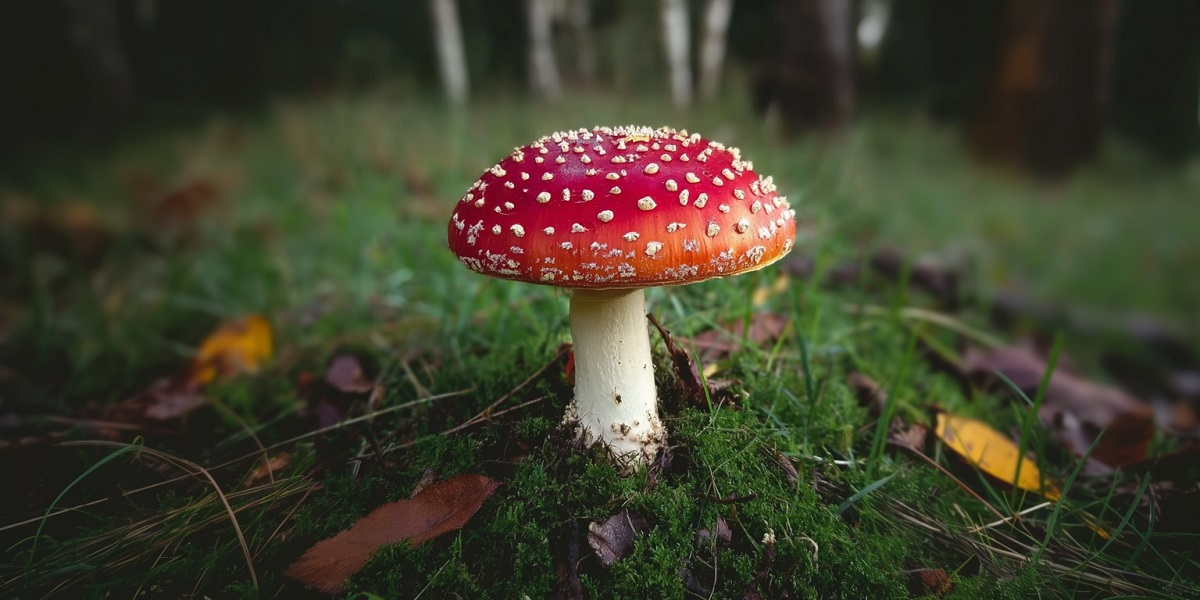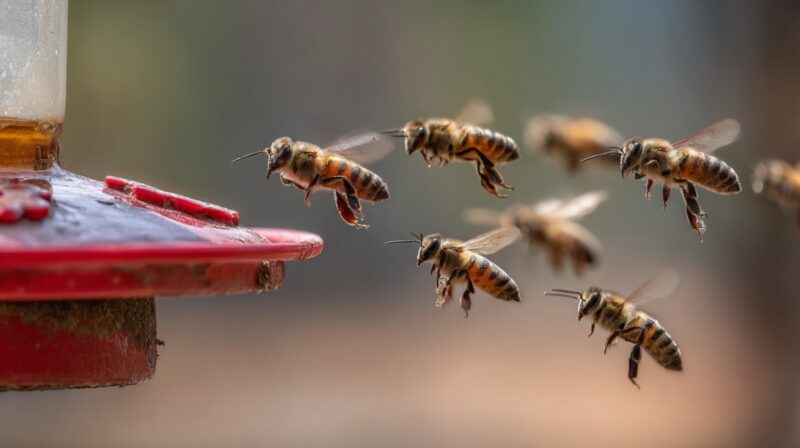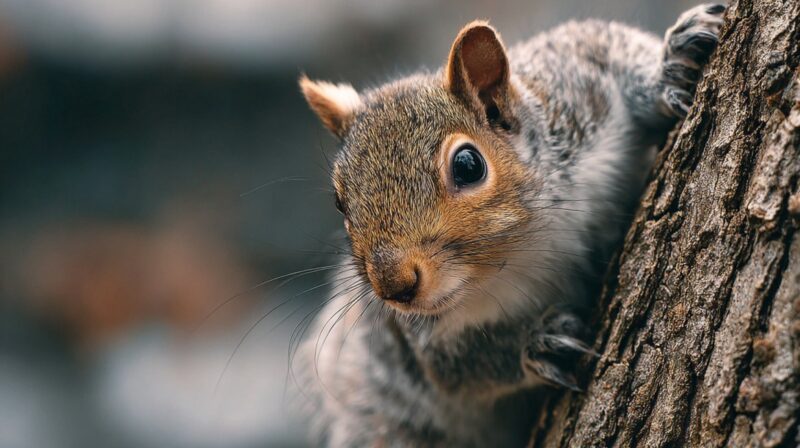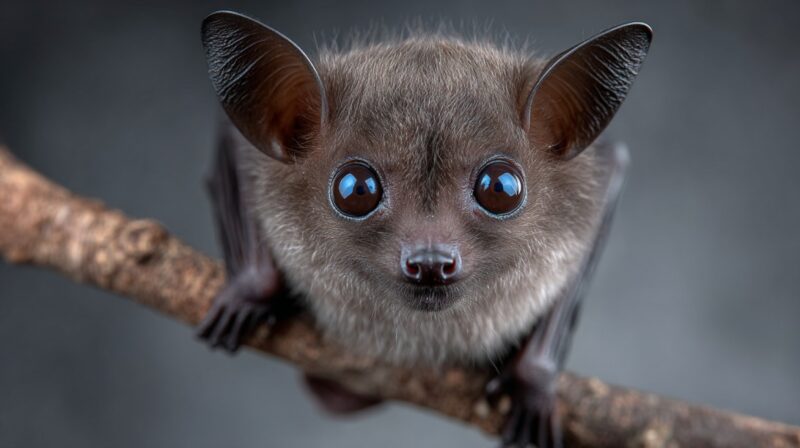
Share Post:
Bats often get a spooky reputation, yet many of them are irresistibly cute.
With over 1,400 species across the globe, their appearances range from fluffy and bright to sleek and wide-eyed.
These small mammals play vital ecological roles as pollinators and pest controllers, but some species also happen to melt hearts at first glance.
Let us take a look at the cuttest bats out there.
1. Honduran White Bat (Ectophylla alba)
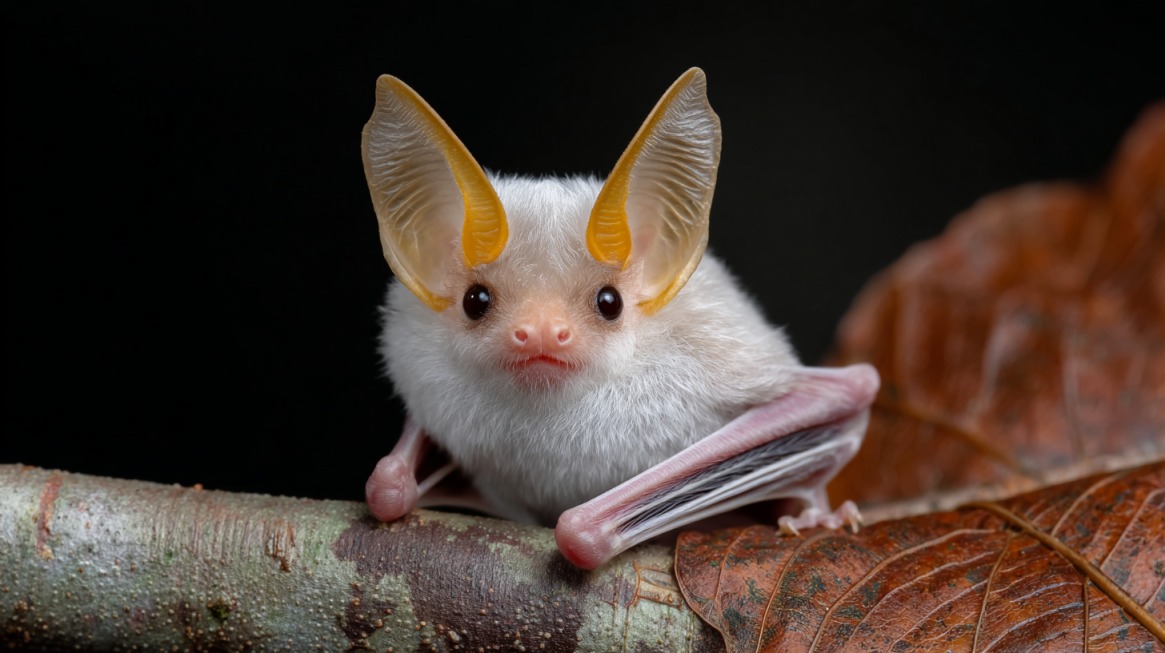
Tiny yet incredibly eye-catching, the Honduran white bat features soft, snow-colored fur contrasted with vivid orange ears and nose. Its bright appearance makes it look like a floating cotton puff hidden within the dense greenery of Central American rainforests.
Adapted to the humid tropical environment, it finds comfort among broad heliconia leaves, which serve as both home and protection.
Known for its creative nesting habits, this species constructs leafy tents that provide shade and shelter during the day. These little architects bite along the veins of large leaves, causing them to fold downward like a green canopy.
- Shelter Behavior: Crafts “tents” using heliconia leaves for safety and shade
- Camouflage Function: White fur blends perfectly with light filtered through leaves
Females form small social groups, often made up of six individuals, huddled closely beneath these shelters.
Observing them clinging together resembles watching a tiny bundle of snowballs suspended in the forest canopy. Researchers suggest that their pale fur coloration helps reflect sunlight, keeping them cooler under the tropical heat.
Additionally, their coloration acts as natural camouflage against predators, since the filtered green light disguises their white fur. Watching them nestled beneath leaves creates a scene of innocence and peace rarely linked to nocturnal creatures.
- Region: Central America
- Special Trait: Leaf “tent” building for shelter
2. Spotted Bat (Euderma maculatum)
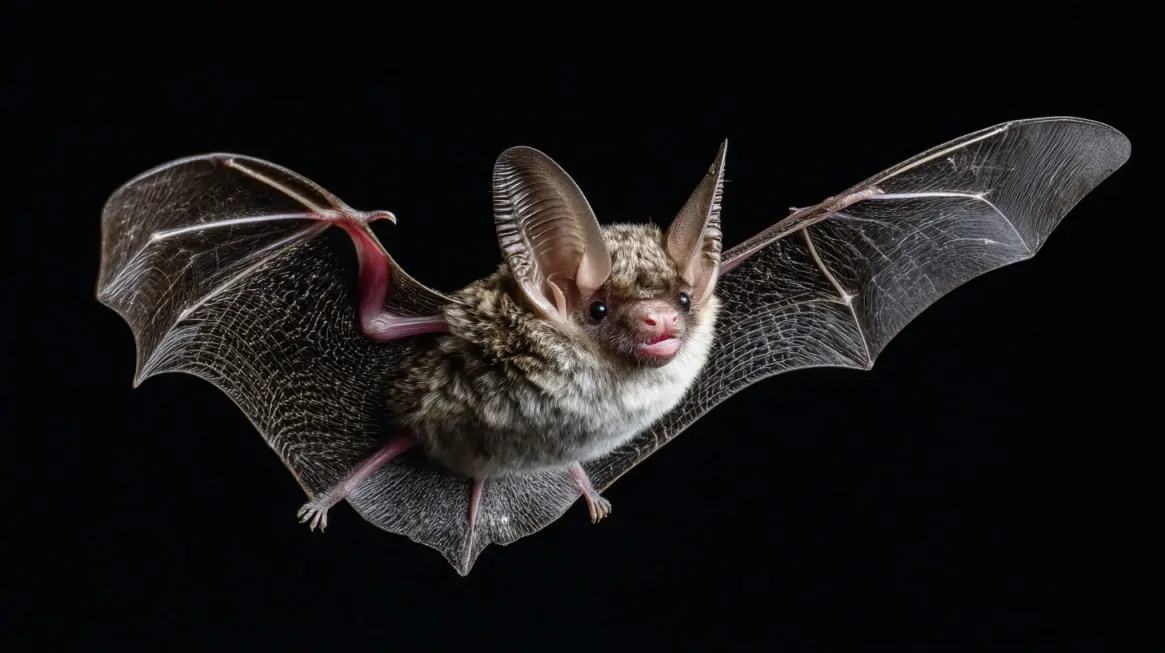
Recognizable by enormous pink ears and three bold white spots on jet-black fur, the Spotted Bat appears almost painted by hand.
It inhabits rugged canyons, cliffs, and desert edges across western North America, typically choosing remote, undisturbed areas.
Its striking appearance and serene flight make it one of the most photogenic bats on the planet.
Capable of detecting the faintest sound of an insect fluttering its wings, the Spotted Bat relies on an acute sense of hearing for precision feeding.
- Primary Diet: Moths, beetles, and other flying insects
- Acoustic Adaptation: Exceptional echolocation and hearing sensitivity
Its echolocation call is unusually quiet compared to other species and sometimes even audible to humans. When it flies under moonlight, its large pink ears appear almost translucent, creating a surreal and soft aesthetic.
Despite its nocturnal habits, its beauty is most visible under low light, making it a favorite among naturalists and photographers.
Roosting high above ground in canyon walls helps protect it from predators. Its black-and-white color contrast also serves as subtle camouflage among shadows and rocks. In motion, it displays an effortless grace that perfectly complements its striking looks.
- Region: Western North America
- Special Trait: Distinct black-and-white fur pattern with enormous pink ears
3. Kitti’s Hog-Nosed Bat (Craseonycteris thonglongyai)
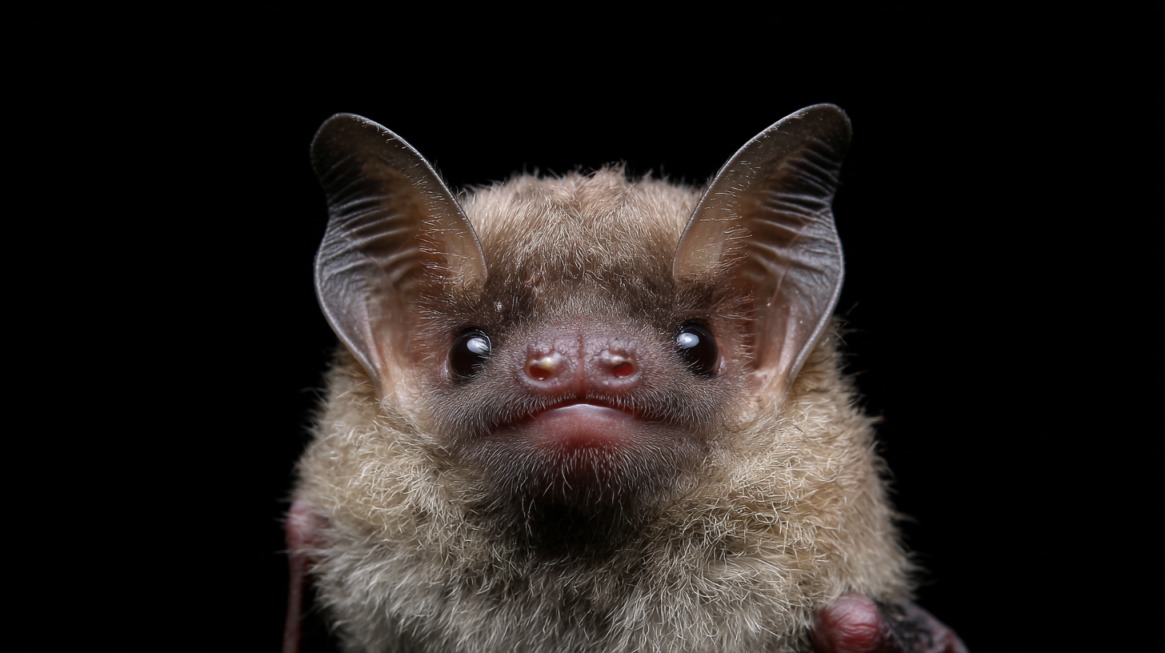
Also known as the bumblebee bat, Kitti’s hog-nosed bat holds the title of the world’s smallest mammal by mass. Weighing less than a penny and measuring barely over an inch long, it seems almost unreal in its fragility.
A round, pig-like nose and tiny eyes give it an expression both peculiar and adorable.
Living within limestone caves along riverbanks in Thailand and Myanmar, it prefers dark, humid habitats that support abundant insect life. Despite its miniature size, it exhibits remarkable agility, hovering in place and darting with precision as it hunts.
- Size Comparison: Roughly equal to a large bumblebee
- Flight Ability: Exceptionally maneuverable for its size
Colonies usually consist of fewer than 100 individuals, often roosting close together for warmth and safety. Feeding primarily on mosquitoes and small flies, it plays an important role in controlling insect populations near its cave habitats.
Observing one in flight is like watching a living speck of light dance in the air.
Its delicate wings and lightweight body make it one of nature’s finest examples of efficient design. Conservationists have taken special interest in protecting its fragile ecosystems since habitat loss threatens its survival.
Despite its size, it proves that even the tiniest creatures can have immense ecological value.
- Region: Thailand and Myanmar
- Special Trait: Smallest mammal, weighing less than a penny
4. Peter’s Dwarf Epauletted Fruit Bat (Micropteropus pusillus)
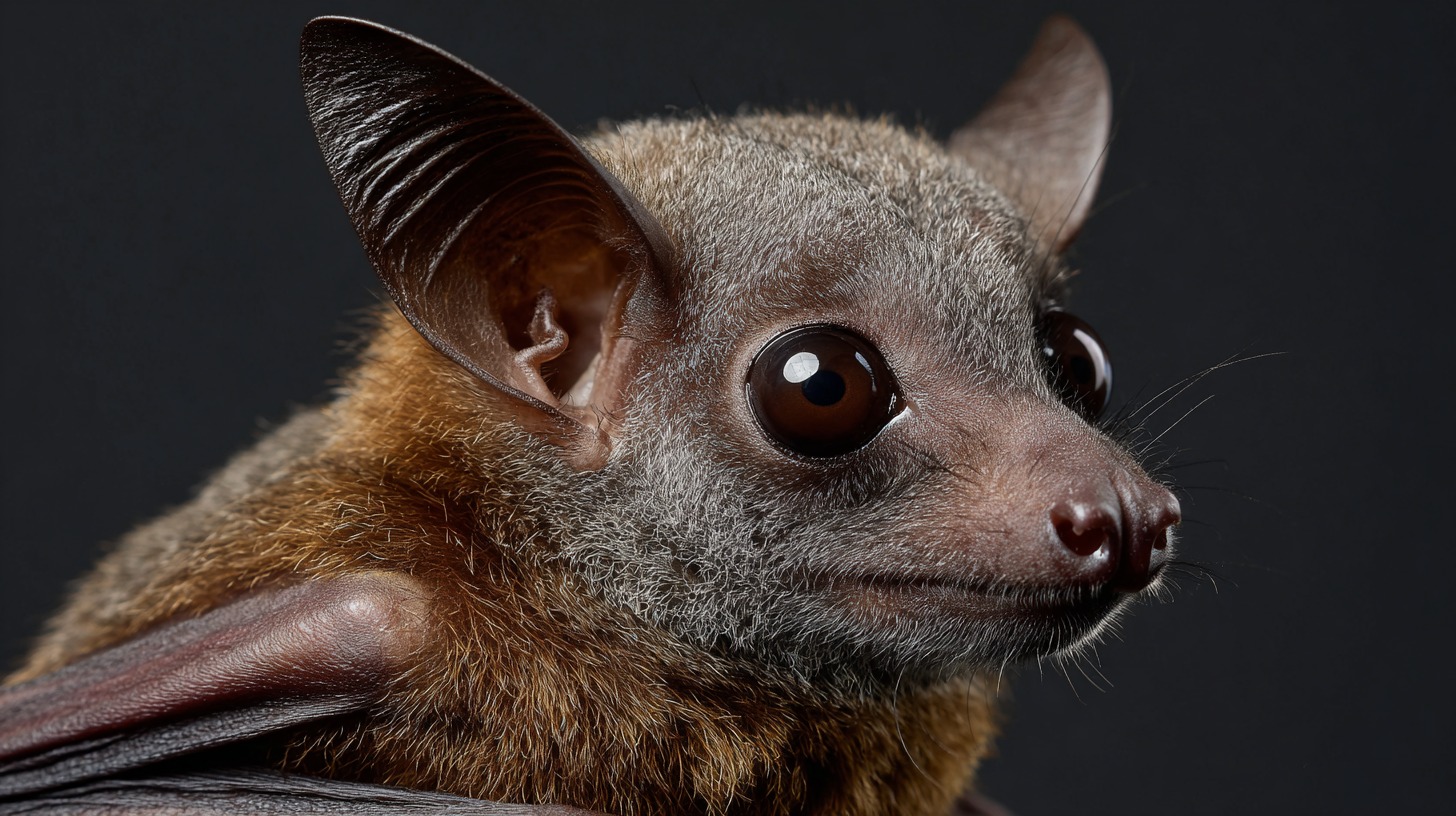
Soft facial features, expressive eyes, and delicate fur make Peter’s dwarf epauletted fruit bat irresistibly adorable.
Found throughout sub-Saharan Africa, it thrives in forests, savannas, and even suburban gardens where fruit and nectar are abundant.
Males develop distinctive white tufts of fur on their shoulders, known as epaulettes, that they puff up to impress potential mates.
- Courtship Display: Males inflate shoulder tufts and emit gentle calls
- Diet: Feeds on fruit, nectar, and occasionally pollen
These bats hang quietly during the day, often in pairs or small groups, creating peaceful scenes of suspended rest. Observing them upside down, wrapped in their wings, reveals a sense of serenity and intelligence.
At night, they flutter gracefully between fruit trees, pollinating flowers as they feed.
Their round, almost puppy-like face makes them one of the most photographed bat species in Africa. Conservation programs promote awareness of their ecological role as pollinators for native fruit trees.
Despite their small size, they represent a key link between plant health and animal diversity in African ecosystems.
- Region: Sub-Saharan Africa
- Special Trait: Shoulder tufts (“epaulettes”) and expressive eyes
5. Spectacled Flying Fox (Pteropus conspicillatus)
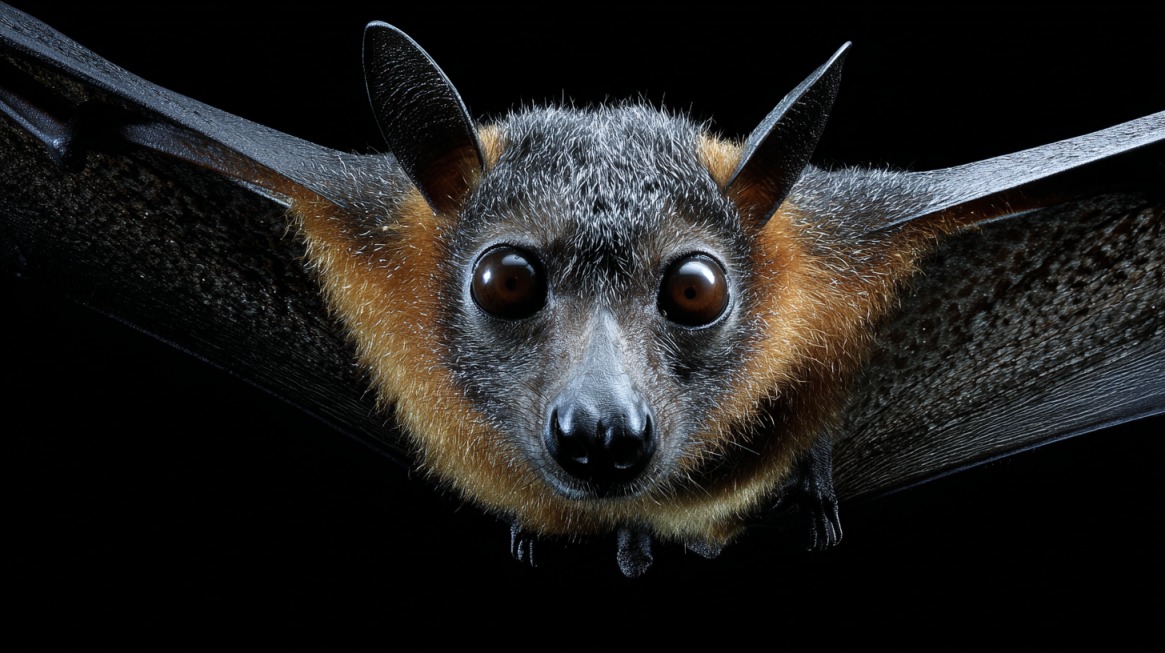
Among the largest bat species in the world, the Spectacled Flying Fox still manages to appear undeniably cute. Its name comes from the pale rings around its eyes that look like tiny spectacles, giving it a gentle and intelligent expression.
Found in northern Australia’s rainforests, it lives in colonies numbering in the thousands.
Despite its size, it displays a calm demeanor and social nature, often seen roosting shoulder to shoulder in large trees. During daylight hours, colonies create an impressive sight as clusters of furry bodies sway in the wind.
- Wingspan: Exceeds 3 feet (approximately 1 meter)
- Diet: Feeds on nectar, pollen, and fruit, aiding in rainforest regeneration
Acting as vital pollinators, these bats ensure the survival of numerous plant species. Their nightly feeding habits help spread seeds and fertilize trees across wide areas, strengthening rainforest ecosystems.
Despite facing habitat loss and heat stress events, conservation groups continue working to preserve their populations. The combination of size, intelligence, and gentle behavior makes them a symbol of how endearing even large bats can be.
- Region: Northern Australia
- Special Trait: Light eye rings resembling spectacles
6. Ghost Bat (Macroderma gigas)
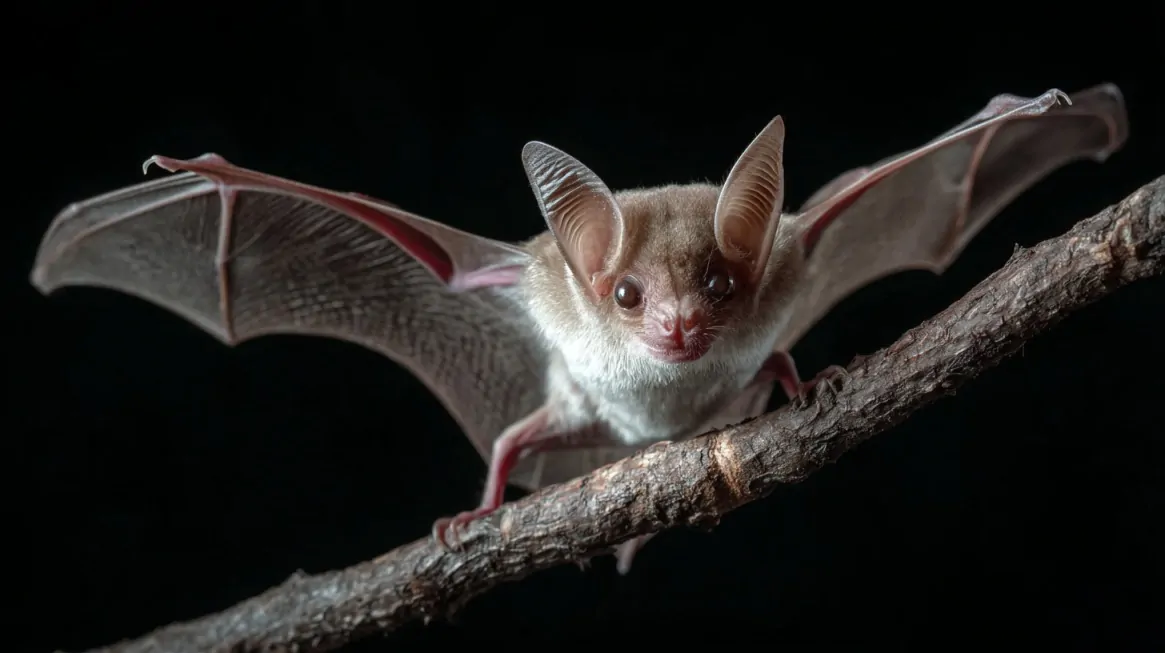
Pale silver-gray fur and striking dark eyes give the Ghost Bat a delicate, almost spectral look. Found mainly across northern Australia, it is among the few carnivorous bat species in the world.
Instead of fruit or insects, it hunts small animals such as frogs, rodents, and even smaller bats, making it a rare predator among its kind. Despite this fierce diet, its wide-eyed expression and fine fur make it appear gentle rather than menacing.
Exceptional hearing allows the Ghost Bat to locate prey without relying heavily on echolocation. Its large ears move independently, capturing even the faintest rustle in the night.
- Diet: Small vertebrates such as frogs, birds, and other bats
- Adaptation: Uses hearing more than echolocation for hunting
This species prefers caves, abandoned mines, and rocky outcrops for roosting, often alone or in small groups. Its solitary nature adds to its mystique, while its soft body and expressive face evoke sympathy rather than fear.
Conservation programs in Australia focus on protecting its roosting sites, as disturbances can easily disrupt its delicate life cycle.
In flight, it glides silently through the darkness, its pale fur reflecting faint moonlight. Observing one at rest feels like watching a ghost suspended in the shadows—beautiful, graceful, and hauntingly calm.
- Region: Northern Australia
- Special Trait: Pale fur and predatory behavior
7. Desert Long-Eared Bat (Otonycteris hemprichii)
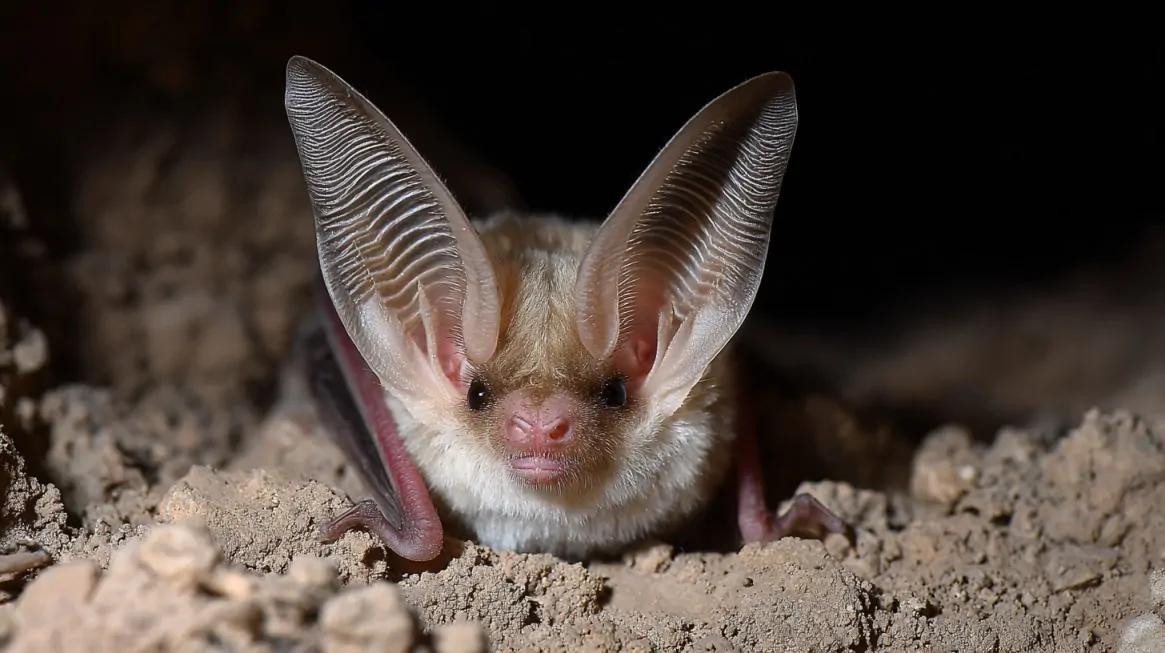
Large, rounded ears nearly as long as its body give the Desert Long-Eared Bat an instantly adorable look.
Found across North Africa and parts of the Middle East, it thrives in harsh desert environments where few mammals survive.
Despite the extreme heat and scarce food supply, it demonstrates remarkable adaptability and courage, hunting some of the desert’s most dangerous creatures.
Renowned for its fearless appetite, it feeds on venomous scorpions, stunning them with quick, precise strikes before consuming them. Its thick fur protects it against bites, while its ears pick up the faint movements of prey crawling beneath the sand.
- Diet: Scorpions, beetles, and desert insects
- Survival Trait: Immune to certain scorpion venoms
When viewed up close, its alert expression and oversized ears resemble those of a desert hare.
During the day, it seeks shelter in crevices or under rocks to avoid the scorching sun. At night, it emerges with swift, deliberate movements, embodying both resilience and elegance.
Researchers admire its balance of toughness and cuteness, a combination rarely seen in desert animals. Its survival strategies highlight evolution’s creativity in shaping life even under the harshest conditions.
Watching it perch quietly before a hunt offers a glimpse into nature’s perfect adaptation of form and function.
- Region: North Africa and the Middle East
- Special Trait: Giant ears and scorpion-hunting ability
8. Brown Long-Eared Bat (Plecotus auritus)
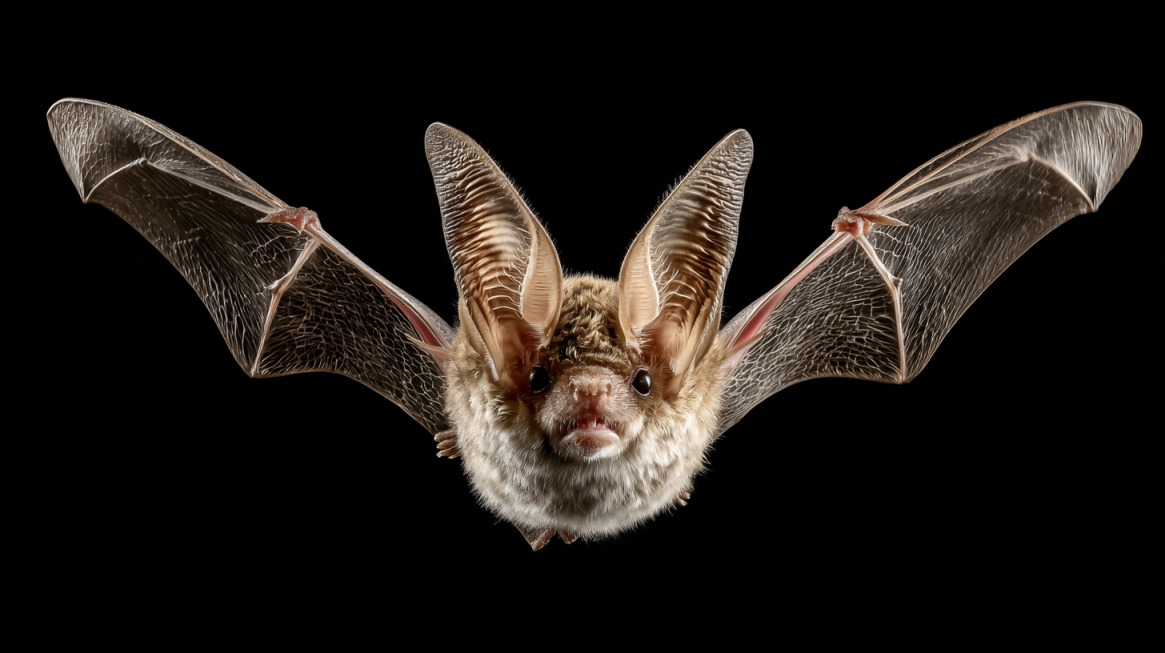
Few creatures capture gentle beauty quite like the Brown Long-Eared Bat. With ears almost as long as its body, it has a cartoonishly sweet appearance that instantly softens even those afraid of bats.
Found throughout Europe, it prefers quiet woodlands, old barns, and abandoned buildings where it can safely roost away from predators.
The bat’s hunting style is calm and deliberate, often hovering in mid-air or picking prey directly off leaves and bark.
- Diet: Moths, beetles, and small flying insects
- Hunting Method: Uses low-frequency echolocation and passive listening
During rest, it folds its long ears neatly under its wings, giving the appearance of a small creature wrapped in a blanket. That habit, combined with its soft brown fur and peaceful expression, makes it look impossibly cute.
Active mostly during calm nights, it glides gently through wooded areas with slow, fluttering wingbeats.
People who encounter one often describe it as almost magical in its grace. Because of its sensitivity to environmental changes, it serves as an indicator of ecosystem health across many regions in Europe.
@alyb_batgirl They are called “little brown bats” for a reason 🦇 #cute #bats #smol #onthisday ♬ built like a baked bean – 🍉 Mortimancer 🍉
- Region: Europe
- Special Trait: Long ears tucked under wings during sleep
9. Indian Flying Fox (Pteropus medius)
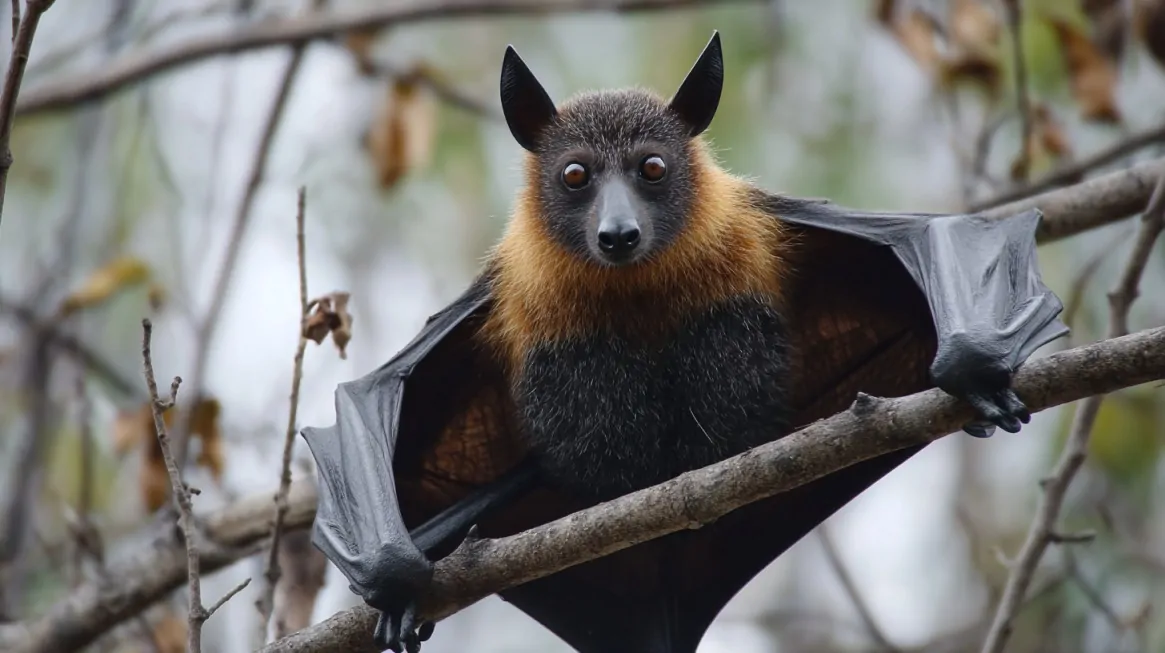
Among fruit bats, few are as visually striking as the Indian Flying Fox.
Its reddish-golden fur and foxlike face give it an appearance that feels more canine than bat-like.
Found throughout the Indian subcontinent, it forms massive colonies that roost in large trees near:
- Rivers
- Temples
- City parks
Despite its impressive size, reaching wingspans up to five feet, its demeanor remains calm and social.
Each morning, hundreds can be seen hanging together in sprawling roosts, grooming each other, and communicating through soft vocalizations.
- Colony Size: Often hundreds to thousands in a single tree
- Diet: Fruit, nectar, and occasionally flowers
During flight, its large wings move gracefully through the sky, resembling a gliding fox at dusk. Observers often describe its flight as mesmerizing, with golden fur glowing under fading sunlight.
As a key pollinator and seed disperser, it helps sustain tropical forests and fruit crops across the region.
Despite misconceptions that bats are aggressive or frightening, the Indian Flying Fox embodies grace and gentleness.
Watching them stretch their wings after a long day’s rest is both majestic and soothing, proving that even the largest bats can exude tenderness.
- Region: Indian Subcontinent
- Special Trait: Foxlike face and golden-brown fur
10. Wrinkle-Faced Bat (Centurio senex)
Wrinkle-Faced Bats might not seem cute at first glance, yet their oddly sculpted faces tell a story of adaptation and intelligence.
Native to Central and South America, these small fruit bats possess deep folds of skin covering their faces, an unusual feature that gives them a distinguished look.
Males display even deeper wrinkles and possess a retractable flap of skin that can cover their face completely when resting.
Those wrinkles are not just for decoration. Biologists believe they enhance the bat’s sense of smell and help channel sound during communication.
The powerful jaw muscles hidden beneath those folds enable it to crush tougher fruits that other bats can’t handle.
- Diet: Hard fruits and tropical berries
- Facial Adaptation: Wrinkles assist in scent marking and sound control
While its appearance may seem intimidating, close observation reveals a calm and gentle nature. Its compact body, round eyes, and curious behavior make it surprisingly endearing once seen in person.
Researchers continue to study its facial structure, hoping to understand how its unusual features evolved for feeding and communication.
- Region: Central and South America
- Special Trait: Wrinkled facial folds and a strong bite for fruit
Final Thoughts
Bats are often misunderstood creatures, people are very scared of them, yet they play crucial ecological roles and display remarkable beauty. Each species listed here reflects a softer, more captivating side of these nocturnal animals.
Also Read: Find out which deep-sea creatures are the most terrifying ones!
Protecting these small flying mammals means preserving essential pollinators, seed dispersers, and insect hunters.
With greater appreciation and conservation efforts, these adorable creatures can continue to thrive and inspire admiration for generations to come.
Related Posts:
- 10 Species Of Owls In Japan (With Photos!)
- Top 15 Small Parrot Species You Can Keep as Pets
- What are 8 Least Dangerous Shark Species
- 20 Stunningly Large White Birds (Photos, Facts, And Sizes!)
- 30+ Stunning Birds With Blue Heads (Examples and Photos)
- Top 10 Migratory Birds in The World You Need to Know About




